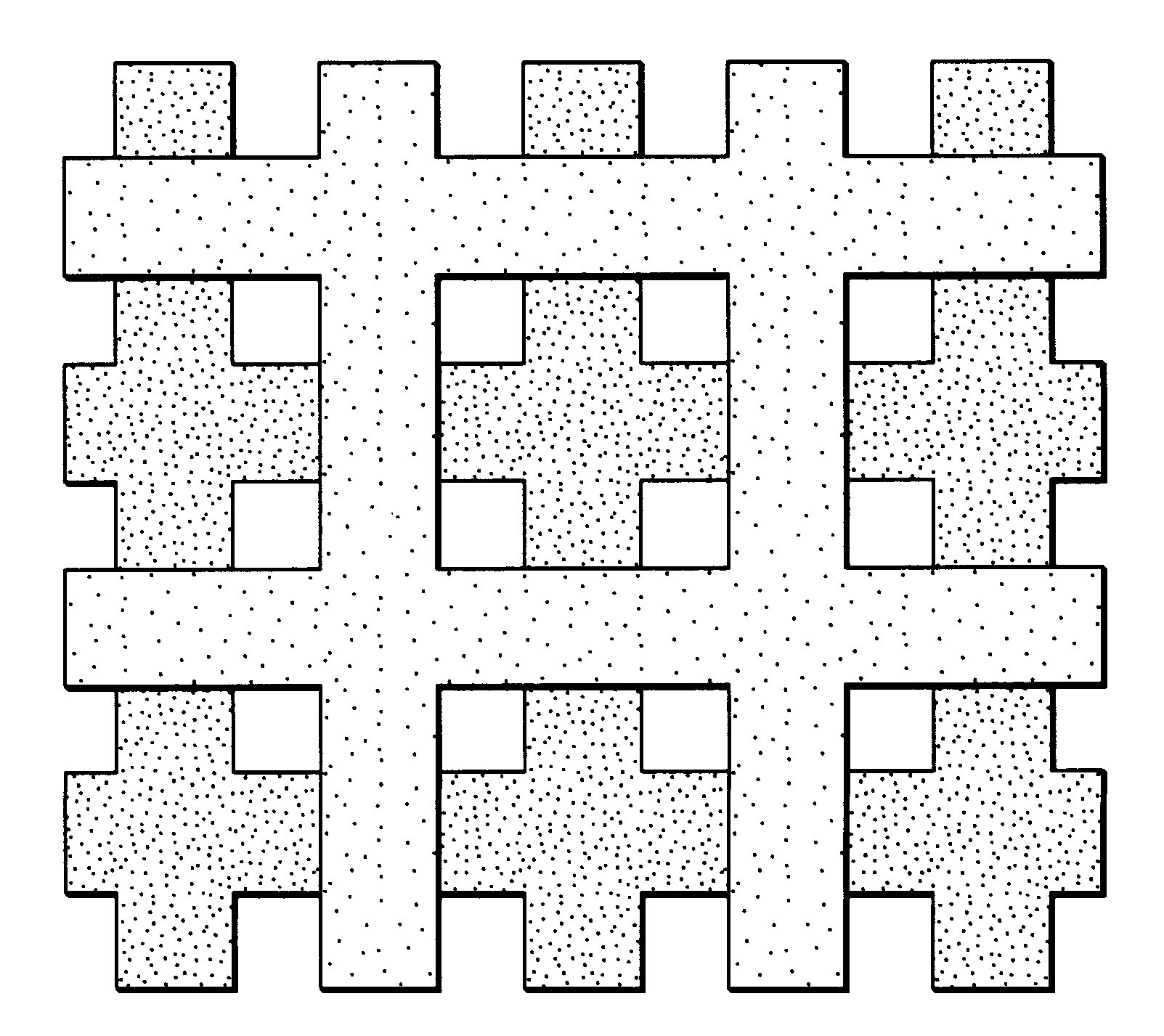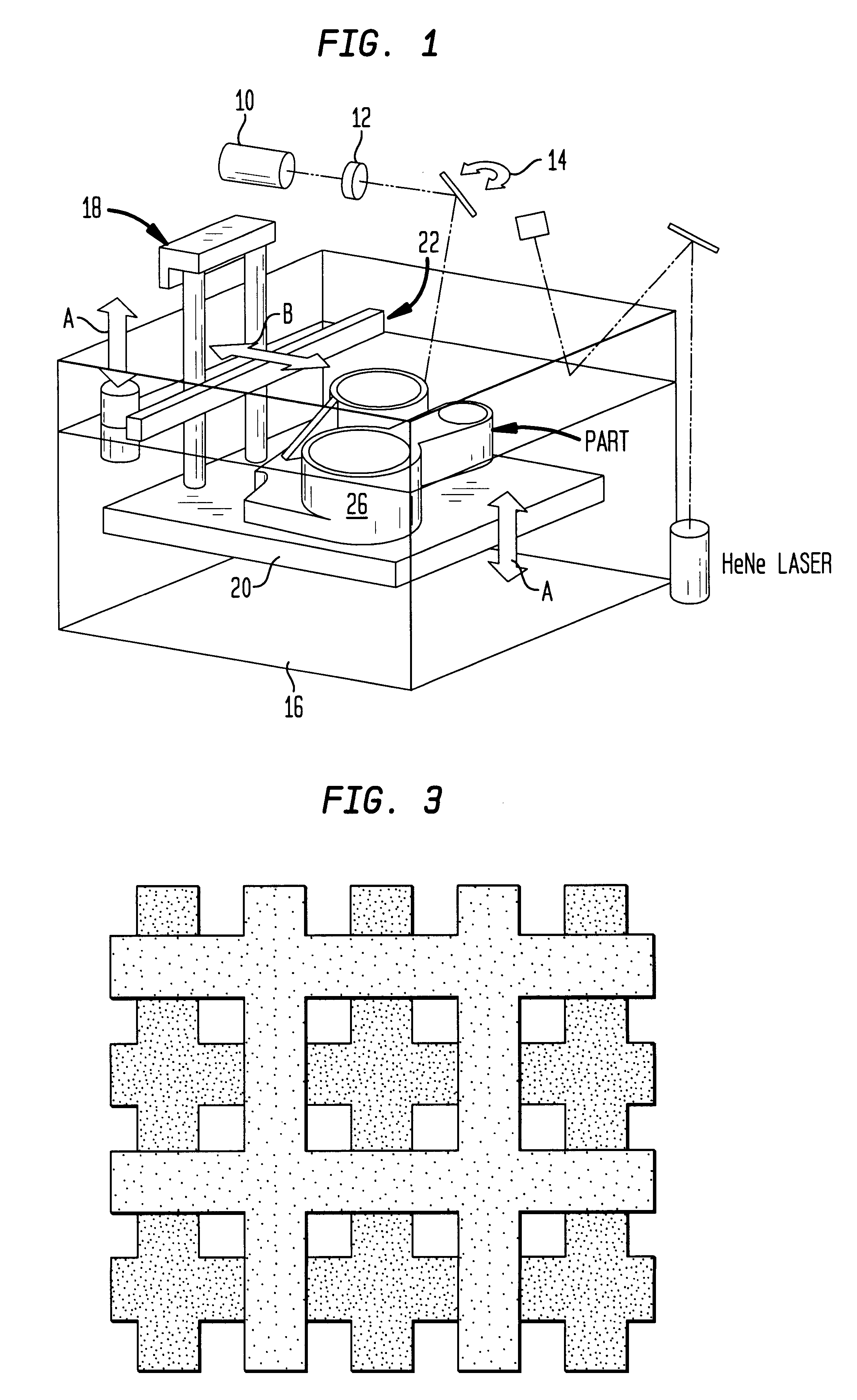Controlled architecture ceramic composites by stereolithography
a technology of ceramic composites and controlled ceramics, applied in the direction of ceramicware, programme control, instruments, etc., can solve the problems of affecting the porosity of the interconnected porous system of osteo-conduction, the ideal pore dimension and the and the inability to determine or achieve ideal pore dimensions and porosity of the interconnected porous system for osteo-conduction
- Summary
- Abstract
- Description
- Claims
- Application Information
AI Technical Summary
Benefits of technology
Problems solved by technology
Method used
Image
Examples
Embodiment Construction
An MRI scan of the bone image was taken from NIH Visible Human Project (Http: / / www.nlm.nih.gov / research / visible / visible_human.html) and was converted into a three dimensional CAD image using "Materialize" computer software and then sliced into thin slices using "Maestro" (3D Systems, Inc.). Computer assisted tomography (CAT) and magnetic resonance imaging (MRI) scanning systems provide high resolution images of the internal structure of the human body. The Visible Human project from NIH provides a database of the MRI and CT scan of the entire human body. During the past few years, these scanning techniques, along with the associated software and hardware have undergone substantial development. It is now possible to represent the images into 3-D surface models or solid models. "Materialize" software converts the MRI or CT images into 3-D models.
Parts were then fabricated on 3D Systems SLA 250 / 40 stereolithography machine from a high concentration (48 volume%) aqueous alumina dispersi...
PUM
| Property | Measurement | Unit |
|---|---|---|
| porosity | aaaaa | aaaaa |
| pore size | aaaaa | aaaaa |
| volume fraction porosity | aaaaa | aaaaa |
Abstract
Description
Claims
Application Information
 Login to View More
Login to View More - R&D
- Intellectual Property
- Life Sciences
- Materials
- Tech Scout
- Unparalleled Data Quality
- Higher Quality Content
- 60% Fewer Hallucinations
Browse by: Latest US Patents, China's latest patents, Technical Efficacy Thesaurus, Application Domain, Technology Topic, Popular Technical Reports.
© 2025 PatSnap. All rights reserved.Legal|Privacy policy|Modern Slavery Act Transparency Statement|Sitemap|About US| Contact US: help@patsnap.com


